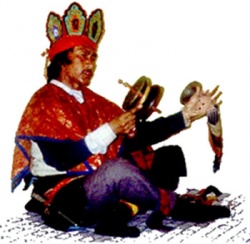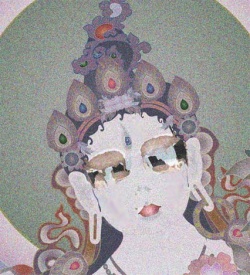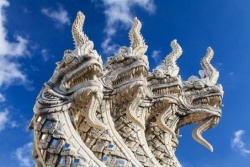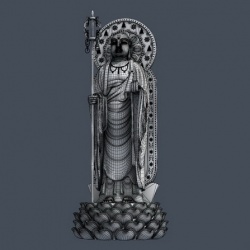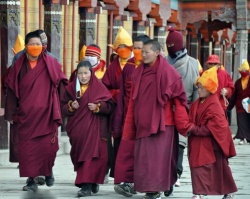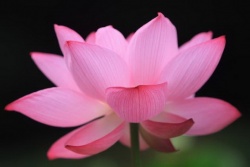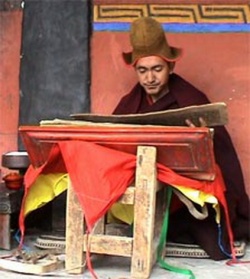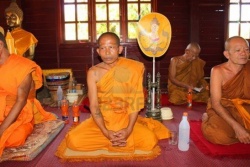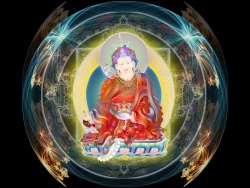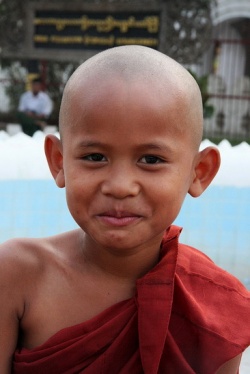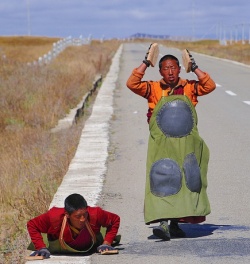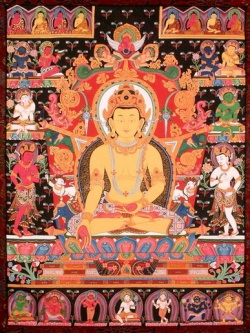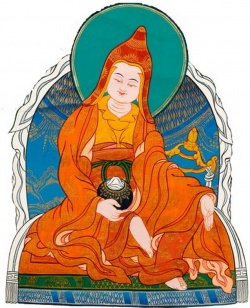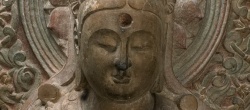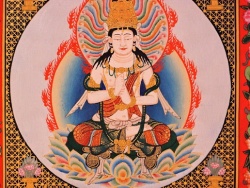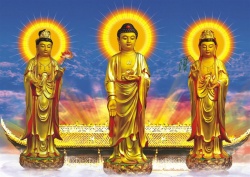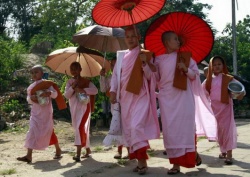Paṭiccasamuppāda-Vibhaṅgasuttaṁ (SN 12.2): The Discourse giving the Analysis (of Conditional Origination)
- See also :
- See also :
Paṭiccasamuppāda-Vibhaṅgasuttaṁ (SN 12.2)[1]
The Discourse giving the Analysis (of Conditional Origination)
Edited & Translated by
Ānandajoti Bhikkhu
<poem>
- Evaṁ me sutaṁ:
- Thus I heard:
ekaṁ samayaṁ Bhagavā Sāvatthiyaṁ viharati, at one time the Gracious One was dwelling near Sāvatthī,
Jetavane Anāthapiṇḍikassa ārāme. in Jeta’s Wood, at Anāthapiṇḍika’s monastery.
Tatra kho Bhagavā bhikkhū āmantesi: [2] There it was that the Gracious One addressed the monks, (saying):
“Paṭiccasamuppādaṁ vo bhikkhave desissāmi vibhajissāmi. “I will teach and analyse conditional origination, monks, for you.
Taṁ suṇātha sādhukaṁ manasi karotha bhāsissāmī” ti Apply your minds thoroughly to it and I will speak.”
“Evaṁ bhante” ti kho te bhikkhū Bhagavato paccassosuṁ. “Yes, reverend Sir”, those monks replied to the Gracious One.
- Bhagavā etad-avoca:
- The Gracious One said this:
Katamo ca bhikkhave paṭiccasamuppādo? And what, monks, is conditional origination?
- Avijjāpaccayā bhikkhave saṅkhārā,
- With ignorance as condition, monks, there are (volitional) processes,
- saṅkhārapaccayā viññāṇaṁ,
- with (volitional) processes as condition: consciousness,
- viññāṇapaccayā nāmarūpaṁ,
- with consciousness as condition: mind and body,
- taṇhāpaccayā upādānaṁ,
- with craving as condition: attachment,
- upādānapaccayā bhavo,
- with attachment as condition: continuation,
- sokaparidevadukkhadomanassupāyāsā sambhavanti,
- grief, lamentation, pain, sorrow, and despair (all) arise,
- evam-etassa kevalassa dukkhakkhandhassa samudayo hoti.
- and so there is an origination of this whole mass of suffering.
Katamañ-ca bhikkhave jarāmaraṇaṁ? And what, monks, is old-age and death?
- āyuno saṁhāni, indriyānaṁ paripāko.
- the dwindling away of the life span, the decay of the sense faculties.
- cuti, cavanatā, bhedo, antaradhānaṁ, maccu, maraṇaṁ, kālakiriyā;
- there is a fall, a falling away, a breaking up, a disappearance, a dying, a death, a making of time;
- khandhānaṁ bhedo, kalebarassa nikkhepo,
- the break up of the constituent groups (of mind and body), the throwing off of the body,
- jīvitindriyassa upacchedo.
- a cutting off of the life-faculty.
Idaṁ vuccati bhikkhave jarāmaraṇaṁ. This, monks, is called old-age and death.
Katamā ca bhikkhave jāti?
And what, monks, is birth?
- Yā tesaṁ tesaṁ sattānaṁ tamhi tamhi sattanikāye
- For the various beings in the various classes of beings
- jāti, sañjāti, okkanti, nibbatti, abhinibbatti;
- there is birth, being born, appearing, arising, turning up.
- khandhānaṁ pātubhāvo, āyatanānaṁ paṭilābho:
- the manifestation of the constituent groups (of mind and body), the acquisition of the sense spheres.
Ayaṁ vuccati bhikkhave jāti. This, monks, is called birth.
Katamo ca bhikkhave bhavo? And what, monks, is called coninuation?
- Tayo me bhikkhave bhavā: kāmabhavo, rūpabhavo, arūpabhavo.
- There are three continuations, monks: continuation in the sense worlds, continuation in the form worlds, continuation in the formless worlds.
Ayaṁ vuccati bhikkhave bhavo. this, monks, is called continuation.
Katamañ-ca bhikkhave upādānaṁ? And what, monks, is attachment?
- Cattārimāni bhikkhave upādānāni: kāmupādānaṁ, diṭṭhupādānaṁ,
- There are, monks, these four attachments: attachment to sense pleasures, attachment to views,
- sīlabbatupādānaṁ, attavādupādānaṁ.
- attachment to virtue and practice, attachment to self-theories.
Idaṁ vuccati bhikkhave upādānaṁ. This, monks, is called attachment.
Katamā ca bhikkhave taṇhā?
And what, monks, is craving?
- rasataṇhā, phoṭṭhabbataṇhā, dhammataṇhā.
- craving for tastes, craving for touches, craving for thoughts.
Ayaṁ vuccati bhikkhave taṇhā. This is called, monks, craving.
Katamā ca bhikkhave vedanā?
And what, monks, is feeling?
- cakkhusamphassajā vedanā, sotasamphassajā vedanā, ghānasamphassajā vedanā,
- feeling arising from eye-contact, feeling arising from ear-contact, feeling arising from nose-contact,
- jivhāsamphassajā vedanā, kāyasamphassajā vedanā, manosamphassajā vedanā.
- feeling arising from tongue-contact, feeling arising from body-contact, feeling arising from mind-contact,
Ayaṁ vuccati bhikkhave vedanā. This is called, monks, feeling.
Katamo ca bhikkhave phasso?
And what, monks, is contact?
- cakkhusamphasso, sotasamphasso, ghānasamphasso,
- eye-contact, ear-contact, nose-contact,
- jivhāsamphasso, kāyasamphasso, manosamphasso.
- tongue-contact, body-contact, mind-contact,
Ayaṁ vuccati bhikkhave phasso. This is called, monks, contact.
Katamañ-ca bhikkhave saḷāyatanaṁ?
And what, monks, are the six sense-spheres?
- Cakkhāyatanaṁ, sotāyatanaṁ, ghāṇāyatanaṁ,
- eye sense-sphere, ear sense-sphere, nose sense-sphere,
- jivhāyatanaṁ, kāyāyatanaṁ, manāyatanaṁ.
- tongue sense-sphere, body sense-sphere, mind sense-sphere.
Idaṁ vuccati bhikkhave saḷāyatanaṁ. This is called, monks, the six sense-spheres.
Katamañ-ca bhikkhave nāmarūpaṁ?
And what, monks, is mind and bodily form?
- Vedanā, saññā, cetanā, phasso, manasikāro.
- Feeling, perception, intention, contact, application of mind.
- Cattāro ca mahābhūtā, catunnañ-ca mahābhūtānaṁ upādāyarūpaṁ.
- The four great elementals, and the form attached to the four great elementals.
- Idaṁ vuccati rūpaṁ.
- This is called bodily form.
- Iti idañ-ca nāmaṁ, idañ-ca rūpaṁ.
- This is mind, and this is bodily form.
Idaṁ vuccati bhikkhave nāmarūpaṁ. This is called, monks, mind and bodily form.
Katamañ-ca bhikkhave viññāṇaṁ?
And what, monks, is consciousness?
- Chayime bhikkhave viññāṇakāyā:
- There are these six consciousnesses, monks:
- cakkhuviññāṇaṁ, sotaviññāṇaṁ, ghāṇaviññāṇaṁ,
- eye-consciousness, ear-consciousness, nose-consciousness,
- jivhāviññāṇaṁ, kāyaviññāṇaṁ, manoviññāṇaṁ.
- tongue-consciousness, body-consciousness, mind-consciousness,
Idaṁ vuccati bhikkhave viññāṇaṁ. This, monks, is called consciousness.
Katame ca bhikkhave saṅkhārā?
And what, monks, are (volitional) processes?
- Tayome bhikkhave saṅkhārā:
- There are these three (volitional) processes, monks:
- kāyasaṅkhāro, vacīsaṅkhāro, cittasaṅkhāro.
- (volitional) processes expressed by way of body, (volitional) processes expressed by way of speech, (volitional) processes expressed by way of mind,
Ime vuccanti bhikkhave saṅkhārā. These, monks, are called (volitional) processes.
Katamā ca bhikkhave avijjā?
And what, monks, is ignorance?
- Yaṁ kho bhikkhave dukkhe aññāṇaṁ, dukkhasamudaye aññāṇaṁ,
- Whatever, monks, is not knowing suffering, not knowing the origination of suffering,
- dukkhanirodhe aññāṇaṁ, dukkhanirodhagāminiyā paṭipadāya aññāṇaṁ.
- not knowing the cessation of suffering, not knowing the path leading to the cessation of suffering.
Ayaṁ vuccati bhikkhave avijjā. This, monks, is called ignorance.
- Iti kho bhikkhave avijjāpaccayā saṅkhārā,
- Thus, monks, with ignorance as condition there are (volitional) processes,
- saṅkhārapaccayā viññāṇaṁ,
- with (volitional) processes as condition: consciousness,
- viññāṇapaccayā nāmarūpaṁ,
- with consciousness as condition: mind and body,
- taṇhāpaccayā upādānaṁ,
- with craving as condition: attachment,
- upādānapaccayā bhavo,
- with attachment as condition: continuation,
- sokaparidevadukkhadomanassupāyāsā sambhavanti,
- grief, lamentation, pain, sorrow, and despair (all) arise,
- evam-etassa kevalassa dukkhakkhandhassa samudayo hoti.
- and so there is an origination of this whole mass of suffering.
- Avijjāya tveva asesavirāganirodhā saṅkhāranirodho,
- But from the complete fading away and cessation of ignorance, there is the cessation of (volitional) processes,
- saṅkhāranirodhā viññāṇanirodho,
- from the cessation of (volitional) processes, the cessation of consciousness,
- viññāṇanirodhā nāmarūpanirodho,
- from the cessation of consciousness, the cessation of mind and body,
- nāmarūpanirodhā saḷāyatananirodho,
- from the cessation of mind and body, the cessation of the six sense spheres,
- saḷāyatananirodhā phassanirodho,
- from the cessation of the six sense spheres, the cessation of contact,
- taṇhānirodhā upādānanirodho,
- from the cessation of craving, the cessation of attachment,
- upādānanirodhā bhavanirodho,
- from the cessation of attachment, the cessation of continuation,
- sokaparidevadukkhadomanassupāyāsā nirujjhanti,
- grief, lamentation, pain, sorrow, and despair (all) cease,
- evam-etassa kevalassa dukkhakkhandhassa nirodho hotī” ti.
- and so there is a cessation of this whole mass of suffering.”

